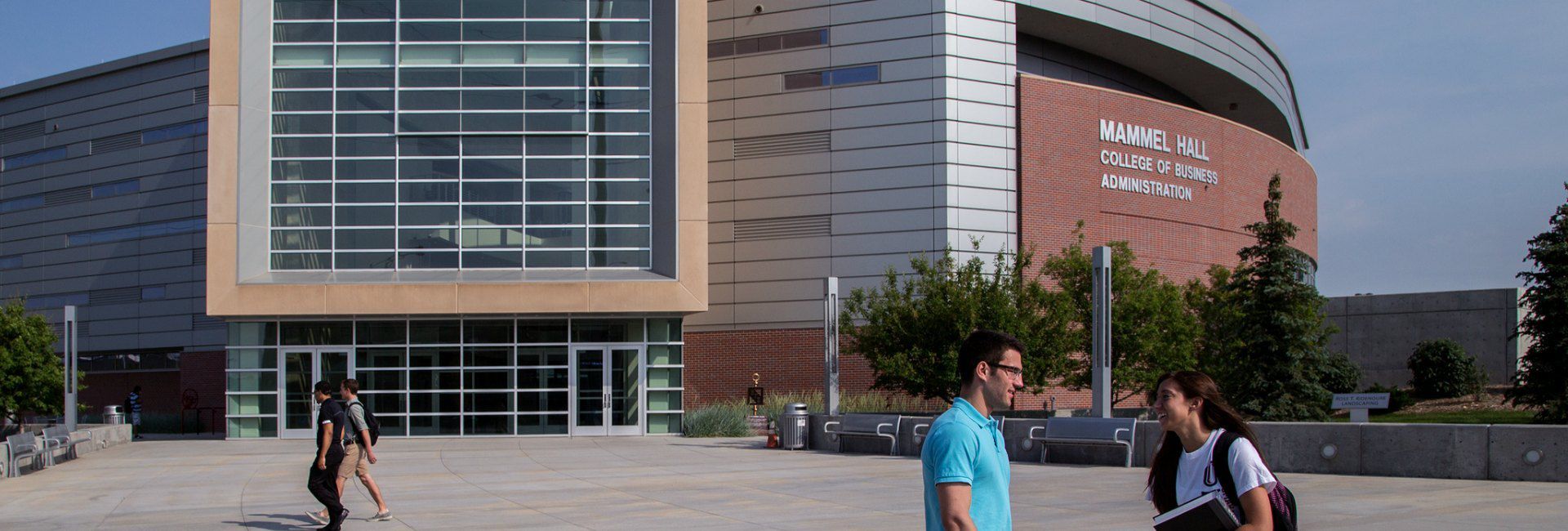Did You Know: Mammel Hall
- contact: Sarah Casey - University Communications
- phone: 402.554.2762
- email: scasey@unomaha.edu
- search keywords:
- Did You Know
- Fast Facts
- Mammel Hall
- LEED
- sustainability

Each month, we'll feature one item about the University of Nebraska Omaha (UNO) that you may not know about for a special series we're calling "Did You Know?"
Mammel Hall, home of the UNO College of Business Administration, was the first LEED (Leadership in Energy and Environmental Design) gold-certified academic building in the University of Nebraska system.
All signs in Mammel Hall are electronic and are powered down to conserve resources overnight. Outside, a rain garden captures runoff from parking lots to help remove pollutants and nurture a native garden.
The building is just one example of UNO's continued dedication to sustainability.
LEED Features:
Development Density and Community Connectivity
The building's location and design work to support connectivity between the University and the adjacent Aksarben Village community.
Alternative Transportation: Public Transportation Access
The building is located within one-quarter mile of one existing campus bus route and two existing city bus routes. This proximity promotes the use of public transportation which reduces the pollution and land development effects of automobile use.
An Omaha B Cycle kiosk is located just across the street encouraging students and faculty to share bikes for short trips during lunch or longer.
Daylight & Views, Daylighting 75% of Spaces
Daylight & views for seventy-five percent of the offices, conference rooms, open work areas, workstations, administrative areas, and the Dean’s Suite. This provides the building occupants a connection between indoor spaces and the outdoors promoting productivity, comfort and overall well-being.
Water Reduction
The unique plant species used in the landscape design will reduce water consumed for irrigation by fifty percent.
Construction Waste Management
Ninety seven percent of the construction and packaging debris has been diverted from landfill disposal back to the manufacturing process or other appropriate sites.
Thermographic Imaging
Infared thermographic analysis of the exterior buildings envelope will be conducted to insure the maximum thermal integrity.
Low Mercury and Energy Efficient Lamps
The building will establish and maintain a toxic material source reduction program to reduce the amount of mercury brought onto the building site and removed from the site in waste through the lamping of low mercury, energy efficient luminaires.
Optimize Energy Performance
Energy efficient light fixtures are used throughout. Overall energy consumption has been reduced to 30% below the standard in order to reduce environmental impacts associated with excessive energy use.
Stormwater Management
About 20% of the rainwater that falls on the site will be fed to basins and then allowed to percolate down below ground to recharge the aquifer and reduce demand on storm sewers.
Learn more about Mammel Hall

